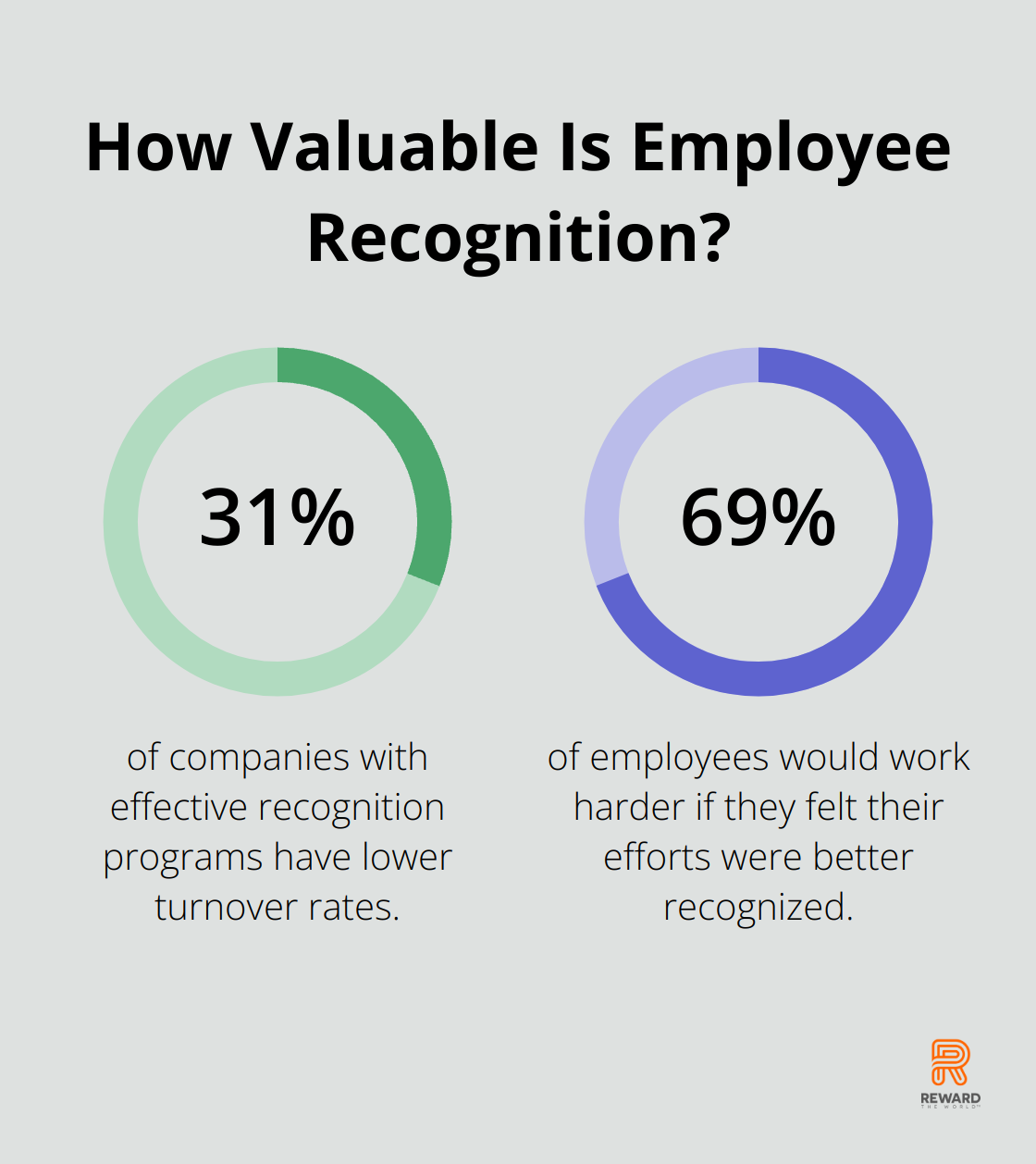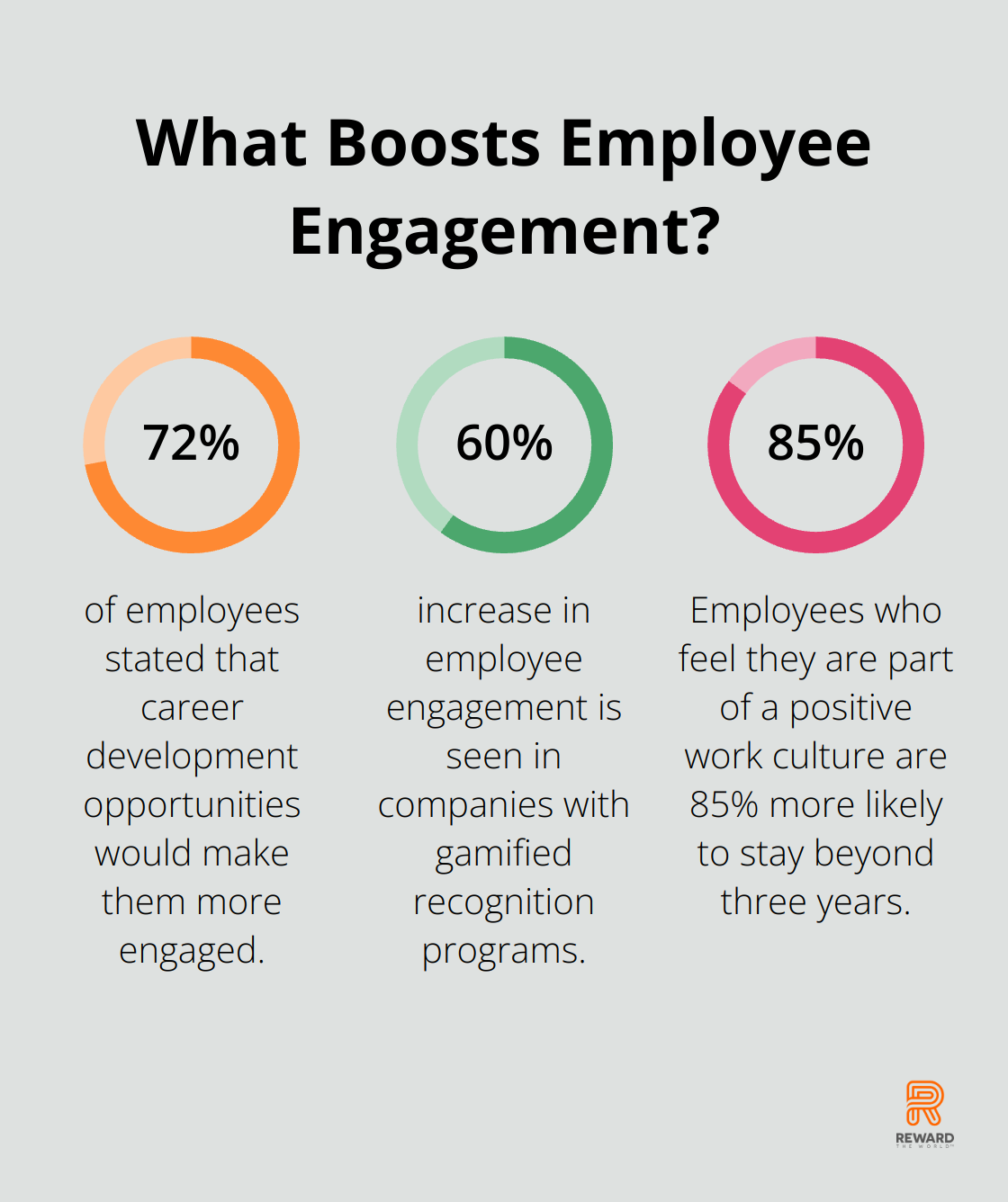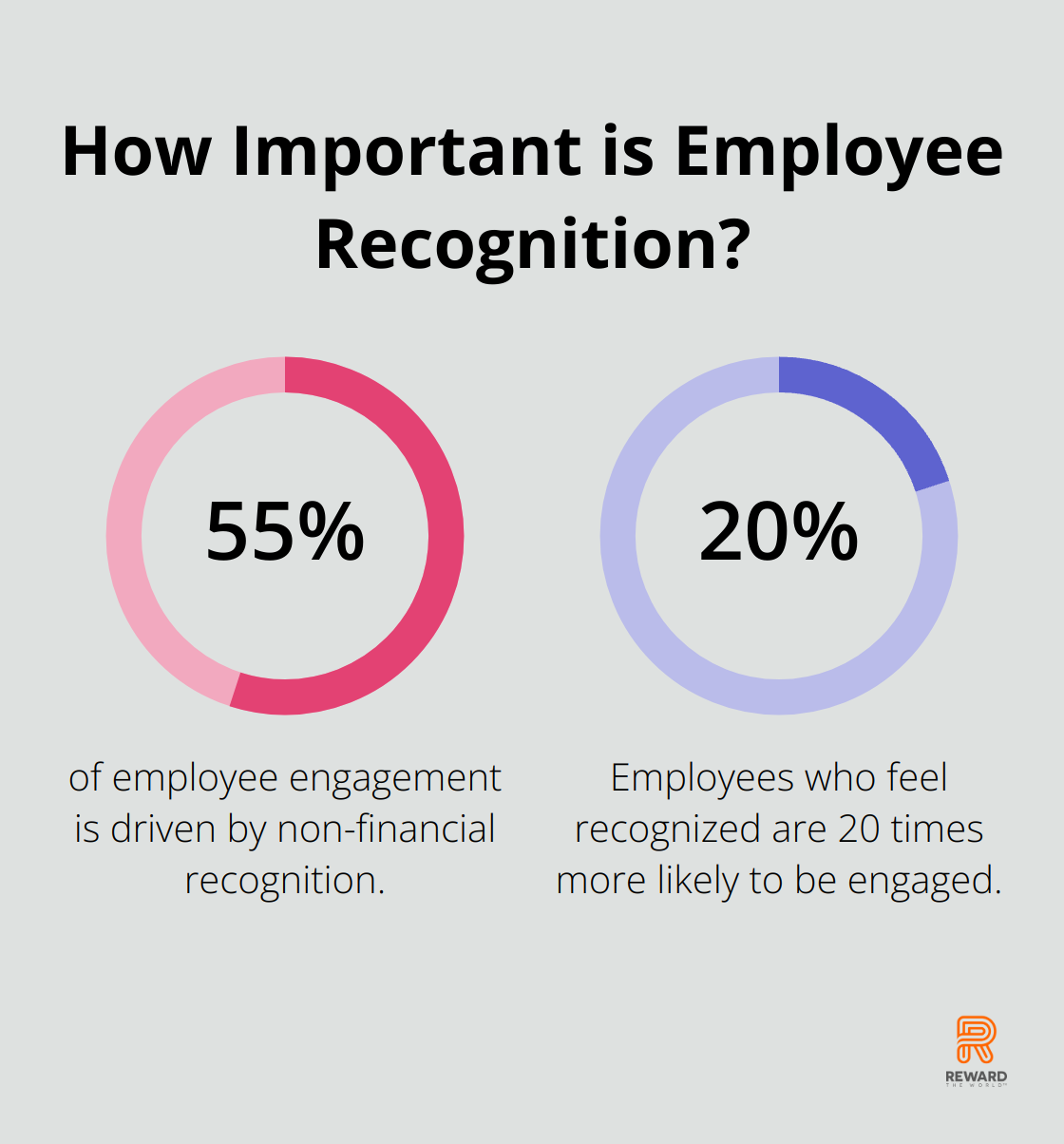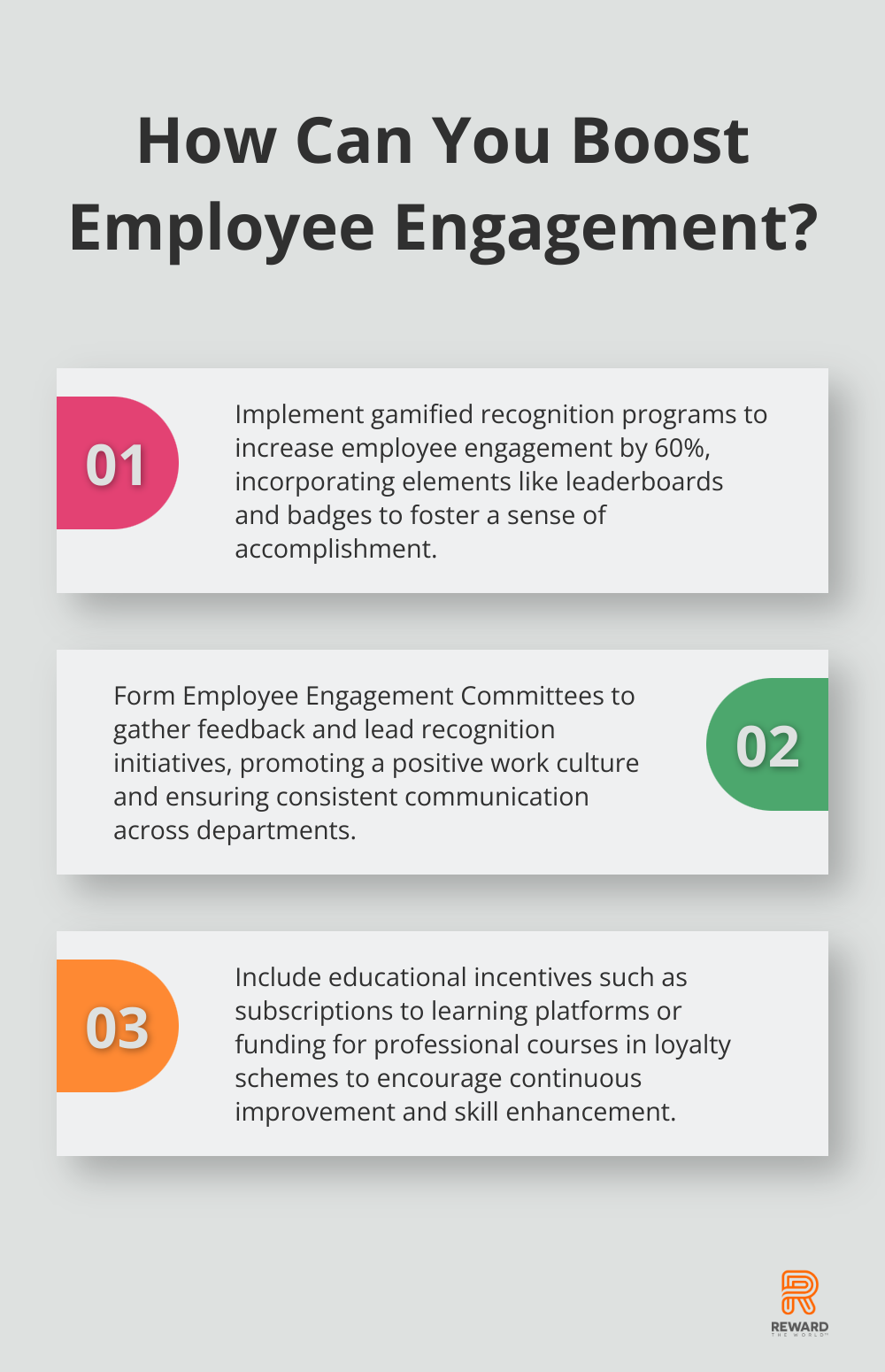
Employee loyalty schemes are transformative for companies aiming to reduce turnover and boost morale.
These programs don’t just improve retention; they make employees more engaged and satisfied with their jobs.
At Reward the World, we are committed to helping businesses create and manage these impactful programs.
How Do Loyalty Schemes Impact Retention?
Reducing Turnover Rates
Reducing turnover rates is essential for any organization aiming to maintain stability and reduce recruitment costs. According to a study by Gallup, companies with effective recognition programs have 31% lower turnover rates. Lower turnover isn’t just about reduced costs. High turnover disrupts productivity and impacts team morale, making retention strategies even more vital.
Increasing Job Satisfaction
Employee satisfaction translates directly into engagement and productivity. Forbes reports that 69% of employees would work harder if they felt their efforts were better recognized. Loyalty schemes offer tangible rewards that validate employees’ contributions, thereby enhancing job satisfaction. When employees feel valued, they are more likely to invest their energy back into the company, driving higher performance levels.
Fostering Long-term Commitment
Long-term commitment is the cornerstone of a productive workforce. The longer employees stay, the more experienced and efficient they become. Glassdoor notes that the average job tenure at companies with strong recognition programs is significantly higher, leading to a more experienced workforce and improved business outcomes. For those looking to dive deeper into how to retain top talent, resources like implement employee incentive programs offer practical strategies.
Adopting loyalty schemes isn’t merely an option; it’s a strategic imperative for companies hoping to cultivate a motivated, stable, and high-performing workforce. From reduced turnover to enhanced job satisfaction and long-term commitment, the benefits are clear and measurable.

How Can You Boost Employee Engagement?
Enhancing Workplace Motivation
Motivating employees isn’t just about offering bonuses. Real motivation comes from a sense of purpose and frequent, genuine recognition. A LinkedIn study found that 91% of senior leaders believe employee engagement directly impacts company success. Effective loyalty schemes provide frequent acknowledgment, be it through public praise or personalized awards.

For example, gamification is a powerful tool for motivation. Companies with gamified recognition programs see a 60% increase in employee engagement. These programs often feature elements like leaderboards and badges, fostering a sense of accomplishment and friendly competition.
Promoting a Positive Work Culture
A positive work culture is the bedrock of an engaged workforce. According to a Gallup study, employees who feel they are part of a positive work culture are 85% more likely to stay beyond three years. Loyalty schemes contribute to this by promoting peer recognition and fostering a sense of community.
An impactful strategy includes forming Employee Engagement Committees to lead recognition initiatives. These committees can gather feedback, suggest improvements, and ensure consistent communication across departments. Making employees stakeholders in the culture-building process elevates their sense of ownership and belonging.
Encouraging Continuous Improvement
Continuous improvement is essential for staying competitive. Employees should feel encouraged to develop new skills and improve performance regularly. According to a Lumesse survey, 72% of employees stated that career development opportunities would make them more engaged.
Loyalty schemes can include educational incentives such as subscriptions to learning platforms or funding for professional courses. This approach ties recognition to skill enhancement, benefiting both individuals and the company. Frequent skill-development opportunities drive innovation and keep the workforce agile.
Ultimately, employee loyalty schemes are not an add-on; they are a necessity for any company wanting to thrive in the modern business environment. From boosting motivation to fostering a positive work culture and encouraging continuous improvement, these programs prove their worth time and again.
For further insights on enhancing workplace culture, check out these employee recognition ideas.
How to Design Effective Loyalty Schemes
Identifying Key Incentives
Identifying the right incentives is the cornerstone of a successful loyalty scheme. According to Gallup, non-financial recognition, such as career development opportunities and additional leave, drives 55% of employee engagement. Providing a mix of financial and non-financial rewards can address different employee preferences. Financial rewards can include bonuses and discounts, while non-financial ones could range from flexible working hours to professional development opportunities.
Personalizing Rewards Programs
Personalization elevates the impact of rewards programs. Data-driven personalized rewards can accommodate individual preferences at scale, leading to more significant engagement. A study by Globoforce found that employees who feel recognized are 20 times more likely to be engaged. Leveraging analytics tools can help identify what motivates different employees. Tailoring rewards such as personalized gift cards or custom experiences can boost morale and retention rates.
Continuous Monitoring and Adjustment
Effective loyalty schemes require continuous monitoring and adjustment. The “set it and forget it” approach does not work. Companies need to regularly gather feedback through surveys, exit interviews, and focus groups. Insights drawn from these methods can inform necessary adjustments. According to a McKinsey study, updating programs based on feedback ensures their long-term success. Using tools for real-time progress tracking can help measure the scheme’s effectiveness and make timely changes.

For more insights on this topic, refer to these employee recognition ideas.
Employee loyalty schemes serve as a critical factor in retaining top talent, so take the time to get them right.
Conclusion
Employee loyalty schemes offer numerous benefits that are hard to ignore. They reduce turnover rates, enhance job satisfaction, and foster long-term commitment. Engaged employees are more productive and stay longer, resulting in a more experienced workforce and positive business outcomes. Implementing these schemes requires identifying key incentives, personalizing rewards, and continuously monitoring and adjusting the program.

Enhancing workplace motivation, promoting a positive work culture, and encouraging continuous improvement are pivotal. Data-driven personalized rewards and real-time progress tracking play crucial roles in the success of loyalty programs. Ensuring that the program aligns with both employee needs and company values is essential.
For companies looking to adopt effective loyalty schemes, it’s vital to consider the insights and best practices discussed. Implementing these strategies can transform employee engagement and retention. Companies ready to elevate their employee recognition initiatives can benefit significantly from platforms like Reward the World, offering a comprehensive and scalable solution.
For more detailed insights, explore resources like strategies for employee incentive programs, which provide actionable advice.
